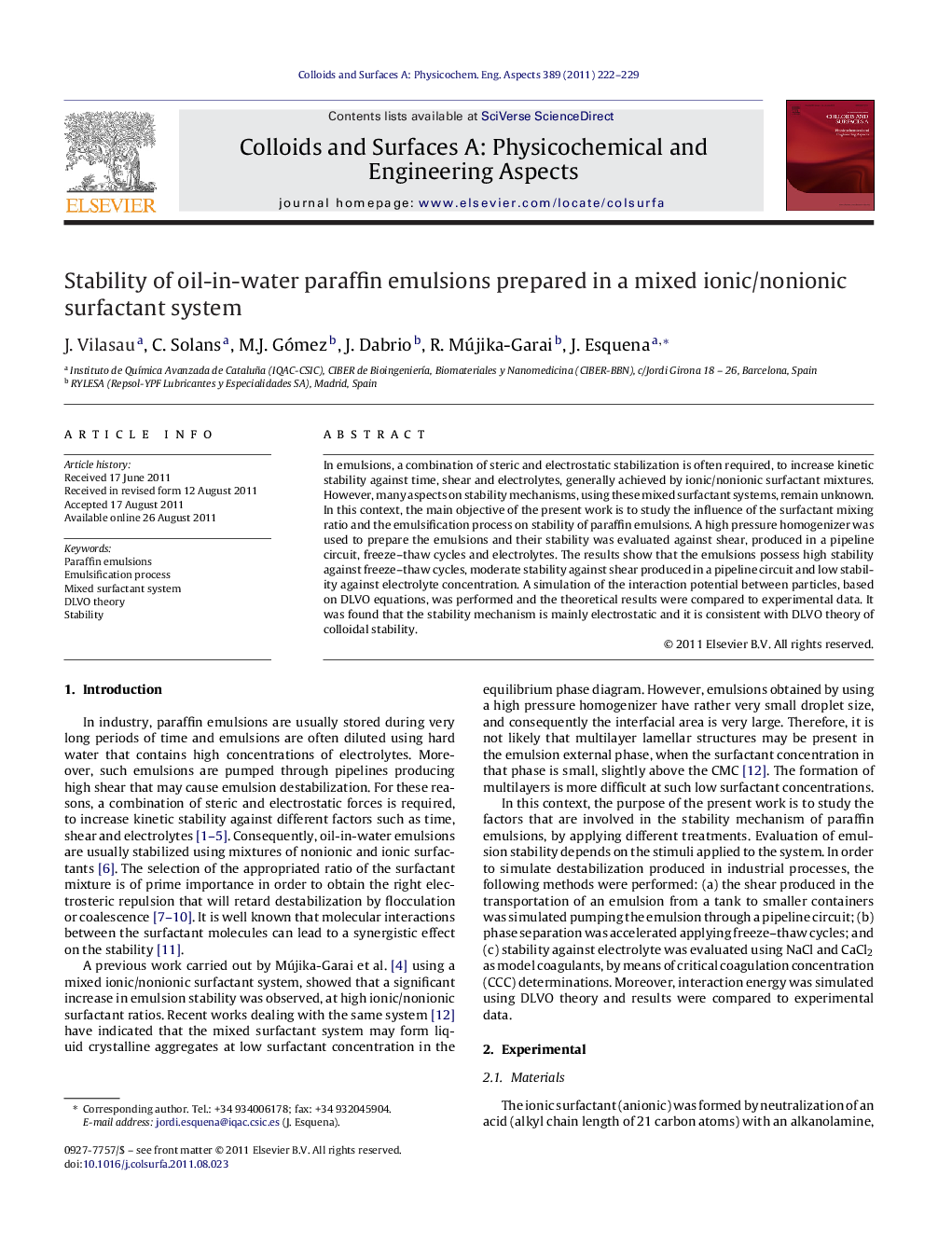| Article ID | Journal | Published Year | Pages | File Type |
|---|---|---|---|---|
| 594553 | Colloids and Surfaces A: Physicochemical and Engineering Aspects | 2011 | 8 Pages |
In emulsions, a combination of steric and electrostatic stabilization is often required, to increase kinetic stability against time, shear and electrolytes, generally achieved by ionic/nonionic surfactant mixtures. However, many aspects on stability mechanisms, using these mixed surfactant systems, remain unknown. In this context, the main objective of the present work is to study the influence of the surfactant mixing ratio and the emulsification process on stability of paraffin emulsions. A high pressure homogenizer was used to prepare the emulsions and their stability was evaluated against shear, produced in a pipeline circuit, freeze–thaw cycles and electrolytes. The results show that the emulsions possess high stability against freeze–thaw cycles, moderate stability against shear produced in a pipeline circuit and low stability against electrolyte concentration. A simulation of the interaction potential between particles, based on DLVO equations, was performed and the theoretical results were compared to experimental data. It was found that the stability mechanism is mainly electrostatic and it is consistent with DLVO theory of colloidal stability.
Graphical abstractFigure optionsDownload full-size imageDownload as PowerPoint slideHighlights► Evaluation of stability depends on the experimental method. ► Stability with ionic surfactants follows DLVO theory neglecting steric interactions. ► Nonionic surfactant is required to maximize stability against CaCl2.
